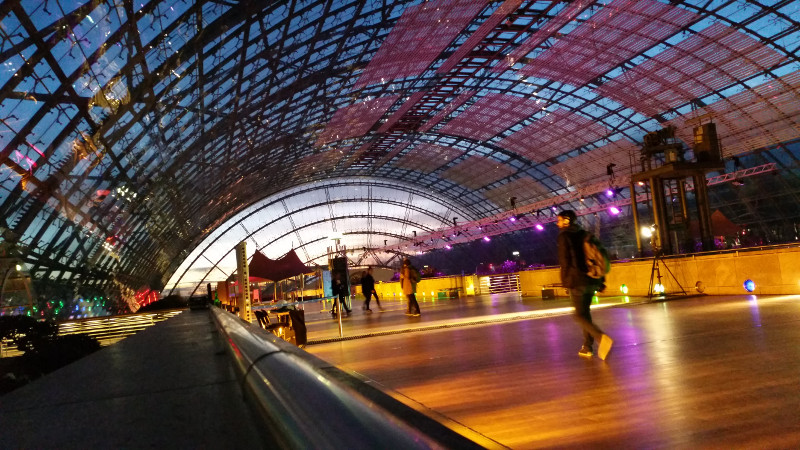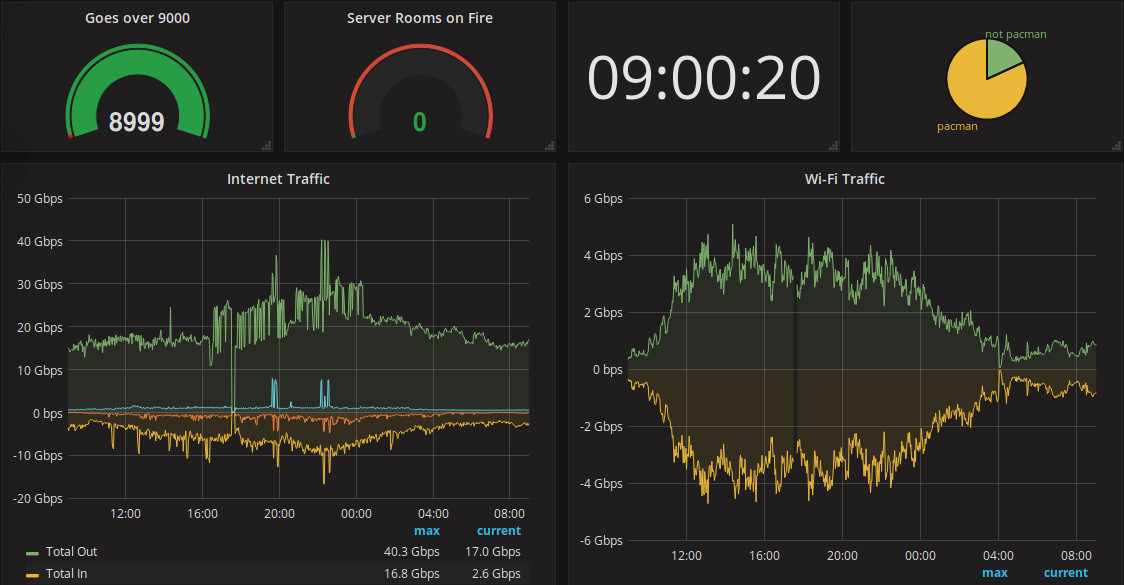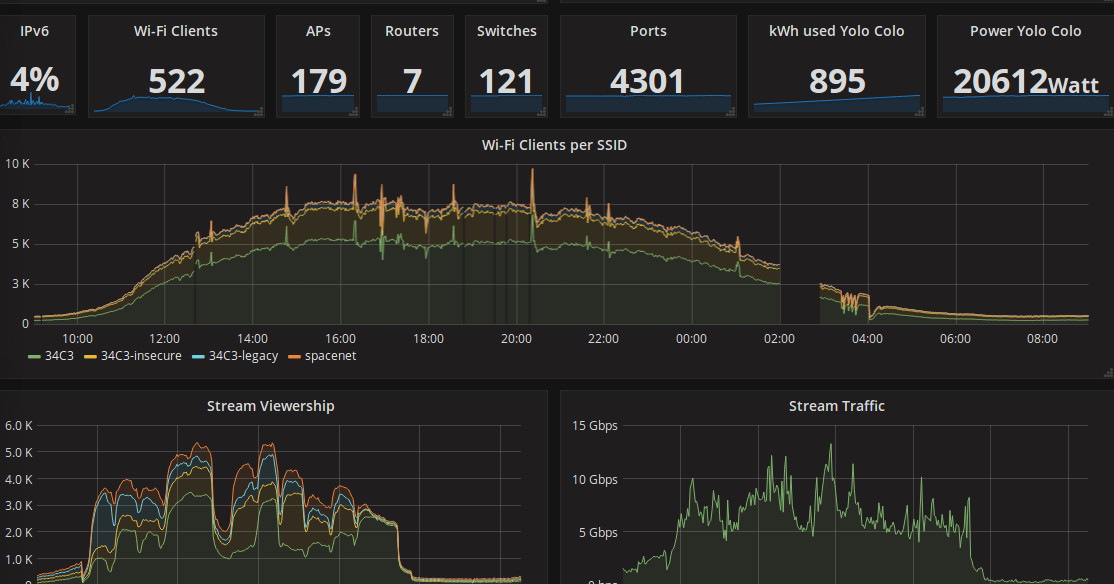
Like every year at Congress, backhaul capacity has again risen to yet another galactic level. According to momo on Twitter, 400 Gbit/s of backhaul capacity is available this time for the 15.000 participants of the Congress. Interestingly, even this number of people has difficulty of filling the pipe.
The On-Site Network Provided by Congress

The first screenshot shows the backhaul throughput on day 2 on the left. As you can see the curve hardly touches 40 Gbit/s of outbound traffic from the Congress to the world and 10 Gbit/s from the world to devices at the Congress. In other words that’s only 10% uplink and 2.5% downlink capacity used. Impressively little. On the left of that screenshot overall Wifi throughput is shown, about 4 Gbit/s in each directions. Strange that uplink and downlink traffic is about the same. If the Congress is still on when you read this you can have a look at the live states yourself here.
In-House Cellular Connectivity
For those who prefer to use cellular connectivity the good news is that in-house coverage is provided. I only checked my favorite network operator and LTE coverage was strong wherever I went and I could always get 15-25 Mbit/s in the downlink when I tried. To be fair to others I used USB tethering instead of Wifi to connect the PC to my smartphone…
Concurrent Video Streams and More Stats

The second screenshot of the Grafana Dashboard shows that for most of day 2 there were more than 3000 people streaming the sessions simultaneously, peaking at well over 5000 for many talks. Some of the streams immediately terminate at the Congress again as despite over 3000 seats being available in the large halls some sessions were overflowing again as in the last years. Also, the halls are so huge that watching the stream might be better than to sit in a row halfway down the hall.
Talks
Speaking of talks, here are my suggestions of talks to have a look at: For those of you speaking German the ‘CCC Jahresrückblick‘ as always gives a good overview what happened in 2017 in Hacker land, both bad and, yes, some good stuff as well.
Another talk I very much enjoyed was ‘Intel ME – Myths and Reality‘. The first half of the talk focuses on what the ME can do and what it can’t do on your system which makes one understand much better just how this think ticks and its mis-use potential. The second part of the talk was about how to get rid of as much of the ME code as possible and then deactivate the ME entirely. The good news is that the tools are not only for old notebooks but also for recent ME versions and hardware! At the end of the talk a link is given to the tools that seem to be almost ready for the ordinary user.
A live feed to Edward Snowden during a talk about the plight of the refugees that helped him submerge in Hong Kong for 2 weeks is also not to be missed. It makes me sad that four years down the road and nothing much has changed for Edward and the refugees and things have gotten even worse for them in Hong Kong. But no, Snowden doesn’t ask for help for himself, he instead speaks out for them.
And that’s it for today, next check-in tomorrow morning.